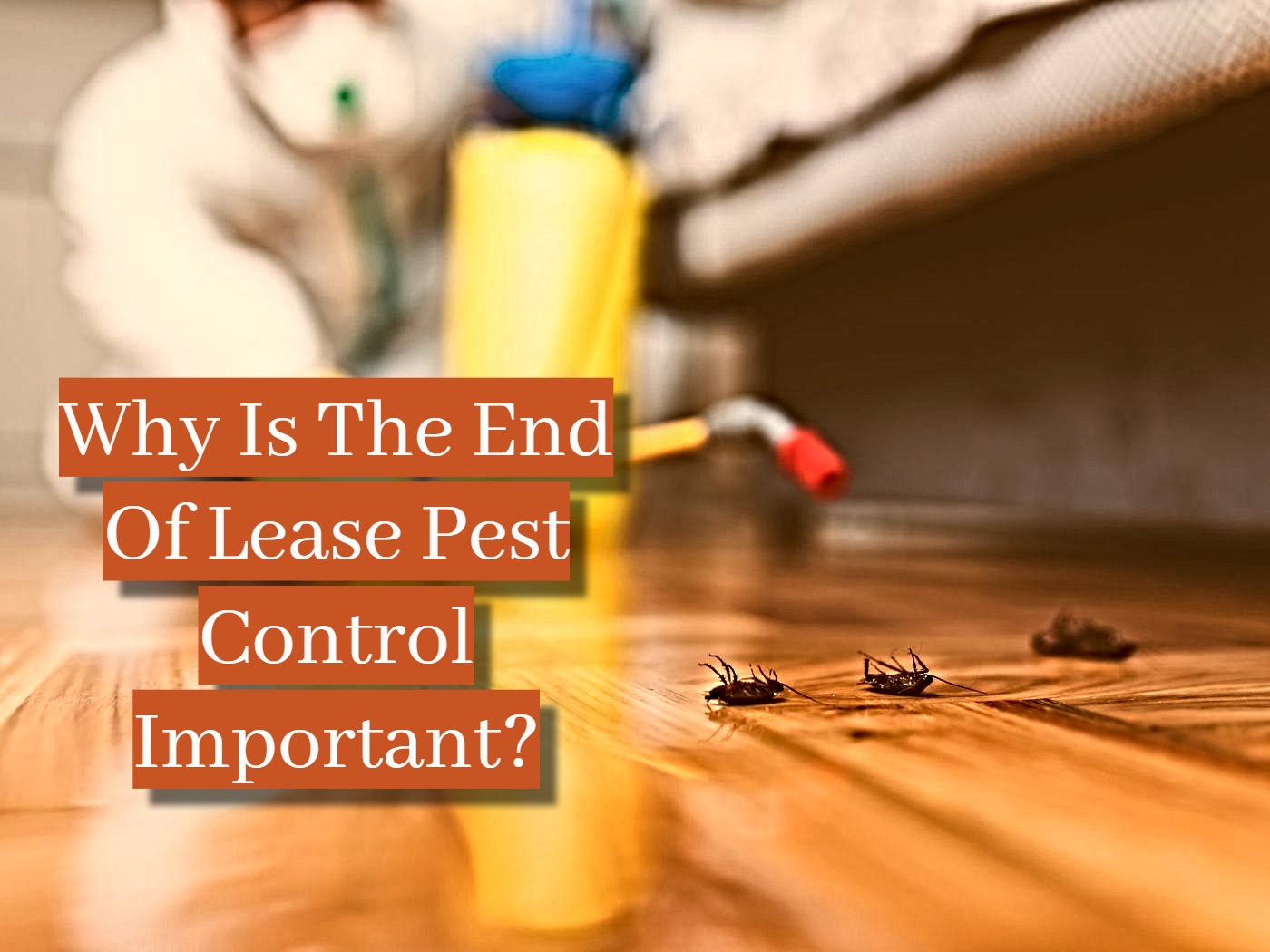
30th Sep 2021
Why Is The End Of Lease Pest Control Important?
Do you have a pest problem in your rental property in Brisbane? You’re not alone. Pests can be an issue for any tenant or landlord, which is why it’s so important to take preventative measures with regular treatments from professional pest control services.
This article will discuss the end of lease pest control Brisbane, how it helps tenants and landlords alike, and why it’s so important to have a pest control service come in and take care of the issue if you notice signs of pests.
What is the end of lease pest control?
The end of lease pest control is a treatment between the tenant moving out and the new tenants moving in. It’s an opportunity for pest control professionals like Bond Back Pest Control in Brisbane to go through your rental property, find where pests are living (or their entry points), make sure they’re gone, and keep them away!
An example of the end of lease pest control is the end of lease flea treatment.
Why the end of lease pest control is vital for tenants?
As a tenant, it’s essential to realise that you’re not liable for any damage or infestations on the property. However, if you’ve had pets and haven’t disclosed this information to your landlord (or they discovered them after moving out), there is a chance of being charged with pet damages even though these were never your fault!
This is where the end of lease fumigation comes in.
Why the end of lease pest control is essential for landlords?
Apart from keeping current tenants happy with no infestations, there are some things landlords should know about having an end of lease treatment done on your property before new renters move in.
The first is that it will reduce chances of future infestations; if you missed any issues during inspection or treatments weren’t adequate, this may allow pests time to multiply again before the next tenant comes along.
By getting a flea treatment end of the lease, your property will be pest-free for the next renters. Many landlords ask us how long it takes to complete an end of lease treatment, and this depends on size, the number of rooms/suites etc., but usually ranges from about three hours up to a day or two.
Another thing you should consider is that if there are any areas missed during your inspection, which sometimes happens even with amateur pest control services, new tenants may report them after moving in.
Having the treatments done before they arrive means all possible entry points have been treated, so pests can’t set up shop behind walls or under floors once they move in!
This also helps avoid disputes between you and new tenants over pet damages. These were not allowed by law until recently, and now inspections are used to prove animals were there before the tenancy.
If you have pets yourself, they need pet fumigation end of the lease. They can be affected by pests even if they don’t show any symptoms, so keeping their environment pest-free will help keep your furry babies happy and healthy!
The final reason landlords need end of lease pest control treatments is that some pests won’t go away on their own despite our best efforts at prevention.
Since we usually require access from tenants to provide an effective treatment all around the property (we cannot typically treat behind closed doors), this ensures that no one comes back to report infestations months later when new tenants move in next door – which happens more often than you might think.
When should you get an end of lease pest control treatment done?
The proper time for an end of lease pest control treatment is within a few weeks before you intend to hand over the keys and move out.
For landlords, you should get an end of lease pest control treatment done when the tenant hands over the keys.
Although there are some exceptions where a tenancy agreement might say that you don’t need to leave your home in clean condition at the end of your tenancy (e.g., if you have caused damage) – invariably, no one likes being accused of leaving their property dirty or unclean.
So, doing this can be very helpful later on down the track when any disputes arise between parties who were involved with your rental property, including subsequent landlords or owners after you move out.
What can common household pests be controlled by effective treatment?
Bugs we commonly see include cockroaches, ants, spiders, silverfish and bed bugs – although not all treatments are effective against these species. Bond Back Pest Control offers both heat and chemical methods for controlling infestations.
How can you prepare for an end of lease pest control treatment?
We will need access to all areas where the tenant has been living during their tenancy (just as with any other service) and require removal or covering up items like foodstuff that may attract insects/pests such as pets, food, etc. birdseed. We also recommend avoiding leaving rubbish out, as this can attract rodents such as mice and rats.
Finally, you should contact several companies to have an idea of the end of lease flea treatment cost. This way, you will know how to budget.
What should I look for in a pest control service?
When searching for a pest control service, you should look for a company with experience in the industry, as well as accreditations from reputable bodies. You want to ensure that you are working with an experienced and reputable pest control business that will deal effectively with your problem of insect/pest infestation.
How we can help?
At Bond Back Pest Control, we have been servicing the local community for many years. We specialise in a range of pest control treatments, including property vacate pest control, termite protection and prevention, ant eradication, end of lease flea control spray, and insect/pest infestation treatment.
